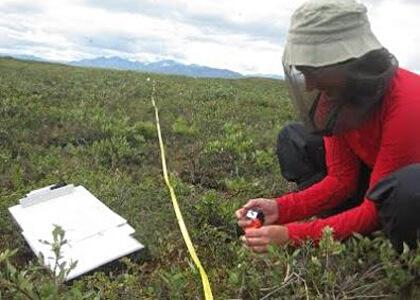Last summer I did not soak in the summer rays or go somewhere tropical, instead I was on the North Slope of Alaska. This internship was at Toolik Field Station, which is one of the long-term ecological monitoring stations in North America. Toolik is off of the Dalton Highway near the Brooks Range, above the Arctic Circle in permafrost and tundra. Toolik Field Station is a place where researchers from across the globe come to research the arctic.
My project was with the Changing Seasonality of Arctic Streams Network group. Our group is focusing on how the changing season, especially the extension of the ‘shoulder seasons’ (spring and fall) are influencing streams and the landscape. My project was focused on monitoring plant senescence and stream water chemistry to see if there was any correlation. Researchers in the Arctic have noticed that there has been an increase of nutrients in streams during the extended fall season. It is hypothesized that the reason for this increase is due to a mismatch of senescence between riparian plants and microbes. Due to the changing of season length, light is decreasing but warmer weather is still persistent. Since plants use light as a cue to start senescence, when light decreases plants begin to shut down. Microbes which respond to warm temperature, keep functioning and producing nutrients, which can end up in the stream waters.
On a day to day note I spent a lot of time walking out to our research streams, collecting water samples, observational phenology data and radiometer data with the UniSpec. The observational phenology sampling consisted of going out to the same six transects that were along each of the study reaches, and counting the leaves and the color of leaves at each of the seven plants along each transect. The UniSpec is a machine that measures Normalized Difference Vegetation Index (NDVI), which is basically the amount of greenness a plant is reflecting. These metrics would be measured once a week, while water samples were collected twice a week. During the rest of my week, I would help out other researchers do everything from take sediment cores to installing large weirs to collect water track water.
I learned a lot while I was in Alaska. Everything from identifying tundra vegetation to what to do is a bear attacks. I learned a great deal about how to set up a research project, how to come up with the different metrics that need to be measured, how often you need to measure each of these variables and what to do with all the data after it is collected.
Advice for future REU students at Toolik: Make sure that you get all of your work done before you go out and enjoy the foothills of the Brooks Range, the hiking, the sail boating and all the fun that can be had! If you have the opportunity to go to Toolik or Alaska – DO IT!
